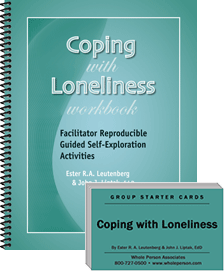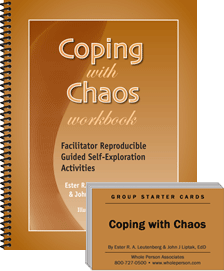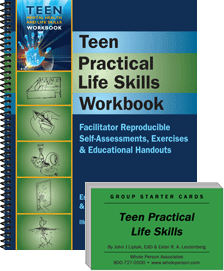See the Girl: Transforming Community Through Girl-Centered Practice
By
INDERJIT (VICKY) BASRA, LMSW
NATALIE ARCE INDELICATO, PhD
VANESSA PATINO LYDIA, MPA
LAWANDA RAVOIRA, PhD
This paper is a collaborative effort between three staff members at the Delores Barr Weaver Policy Center and a faculty member at the University of North Florida written after discussing our collective desire to share the work the Policy Center is doing to engage communities, organizations, and individuals through quality research, community organizing, advocacy, training, and model programming to advance the rights of girls and young women, especially those in the justice system. Our personal and professional identities are tied to partnership and mutuality with girls and young women. We value their lived experiences, knowledge, culture, ethnicity, and language, which aligns with the tenants of Relational-Cultural theory. With this paper, we hope to highlight the need for comprehensive, girl-centered practice to transform communities, share the girl-centered practice model of the Policy Center, and clarify how the constructs of Relational-Cultural theory are used to “See the Girl”. Inderjit Vicky Basra, LMSW, at vbasra@seethegirl.org. Dr. Natalie Arce Indelicato may be contacted at n.indelicato@unf.edu. Vanessa Patino Lydia, MPA may be contacted at vpatinolydia@seethegirl.org. Dr. Lawanda Ravoira may be contacted at lravoira@seethegirl.org.
Over the past two decades, efforts have been made to increase gender-specific services and understand gendered pathways for girls involved in, or at risk for entering into the juvenile justice system; however, there is still significant opportunity for reform. Radical transformation of community and public resources, attitudes, and responses to address the unique psychosocial and educational issues of girls are needed (American Bar Association & National Bar Association, 2001; Bloom & Covington, 2001; Sharp & Simon, 2004; Sherman, 2005). In addition, comprehensive girl-centered practice models grounded in Relational-Cultural theory (RCT) should be adopted. Those place growth fostering relationships and the lived experiences of girls at the center of decision making and advocacy, and offer girls many points of access to needed services along the continuum of involvement with the justice system. In this paper, we discus why comprehensive girl-centered practice models are critical to continued reform, offer an example of a girl-centered practice model grounded in RCT, and illustrate, through sharing several stories, how we are creating growth fostering relationships to transform community as we “See the Girl”.
Click here to download the Delores Barr Weaver Policy Center Girl-Centered Principles
Why Comprehensive Girl-Centered Practice Models are Needed
Researchers, practitioners, and policy makers have begun to acknowledge gender bias within the juvenile justice system and have started to examine the unique needs of girls. Resulting gender specific programming and service delivery models have included acknowledging the unique needs of women and girls, their perspectives, development, and the biased attitudes that prevent or discourage young women from recognizing their potential (Belknap et al., 1997).
While these contributions have significantly advanced the dialogue regarding system reforms, they typically have been translated into single policy or intervention programs, which have not addressed the overarching system practices within or across programs at local and state levels (Ravoira & Patino Lydia, 2013). For example, a policy change may focus on a school suspension, a specific charge, or a dependency issue, rather than seeing the interconnectedness among all aspects of girls’ lived experiences. Ravoira and Patino Lydia (2013) note that this “piecemeal response can result in compartmentalizing the lives of girls with little or no interfacing among the systems charged with providing services and interventions” (p. 300). Another consequence of this approach is that it tends to minimize the importance of mutuality, or connectedness, which is at the core of growth in relationships, particularly for girls and women (Miller, 1997). Without continuity and coordination among multiple points of care, relationships are often short-term interactions with providers rather than the deeper, mutually empowering and growth-fostering relationships that girls need to overcome the disconnections they have faced and continue to face as they navigate multiple systems (Covington, 2007). Additionally, it is important to note that most gender responsive treatment programs or policies do not include the girls or families in the development of the programs and policies that are provided for them, which inevitably leaves them feeling more disconnected and increases the risk for revictimization by the system.
Contextual and sociocultural challenges for girls who are involved in the justice system frequently include poverty, addiction, history of family violence, housing instability, sexual and/or physical abuse, caregivers’ physical and mental health problems, caregivers’ incarceration, and educational failures (Acoca & Dedel, 1998; Patino, Ravoira & Wolf, 2006; Watson & Edelman, 2012; Zahn, Hawkins, Chiancone & Whitworth, 2008). These relational disconnections and violations happen early and often for most girls. Kaplan (1986) discussed the consequences of these types of chronic disconnection including feelings of loss, inhibition to take action, internalized anger, and low self-esteem. Miller and Stiver (1997) also named the consequences of chronic disconnection as the central relational paradox. They wrote:
In the face of repeated experiences of disconnection, we believe people yearn even more for relationships to help with the confused mixture of painful feelings. However, they also become so afraid of engaging with others about their experience that they keep important parts of themselves out of the relationship and develop techniques for staying out of connection. (p. 2)
Not being able to represent oneself authentically can lead to psychological distress, inauthentic expressions of self, and lack of connection with others (Miller & Stiver, 1997). This is similar to situations Gilligan (1982) described for adolescent girls who, when they perceive the threat of loss of connection, lose theoretical “voice” by keeping important thoughts and feelings, either verbally or non-verbally, out of relationships in order to save the relationship. Chronic disconnection can lead to decreased energy, disempowerment, confusion, diminished worth, and turning away from relationships (Jordan & Dooley, 2000). Turning away from relationships can result in feelings of isolation, which has been described as the source of most suffering (Jordan & Hartling, 2002). Further, these disconnections occur in the context of individual, family, and sociocultural experiences (Jordan & Hartling, 2002), which calls for comprehensive intervention at all levels, as well as models of care that allow girls and young women to enter at multiple points along a continuum – from prevention to intervention to system advocacy – in order to have support to navigate the various connections and disconnections in their lives.
Relational-Cultural theory gives a theoretical underpinning for why comprehensive, girl-centered models are needed for continued system reform because it argues that systemic change, along with relationally focused individual intervention, is needed to move girls out of condemned isolation to connection and empowerment. Comstock and colleagues (2008) noted:
RCT complements the multicultural/social justice movement by (a) identifying how contextual and sociocultural challenges impede individuals’ ability to create, sustain, and participate in growth-fostering relationships in therapy and life and (b) illuminating the complexities of human development by offering an expansive examination of the development of relational competencies over the life span (p.279).
Although chronic disconnections can lead to psychological distress, researchers have consistently found that connected relationships predict health and well-being (Meyers, 2000; VanderVoort, 1999). People who have supportive, close relationships with friends, family, and support networks are less vulnerable to negative life events and some physical illnesses than those who have few social ties (Meyers, 2000). Relationships provide the opportunity to develop a positive sense of identity through constructive feedback, meaningful connections, and other people with whom one can work through problems (VanderVoort, 1999). Relationships promote positive and creative growth in addition to protecting us from stress (Jordan, 1992). Relational Cultural theorists argue that growth-fostering relationships, characterized by movement toward mutuality, mutual empathy, and mutual empowerment, are essential for lifelong resilience (Jordan & Hartling, 2002). Hartling (2005) defined resilience as relational rather than a unique, internal quality that is the ability to be tough or resistant to difficult challenges. Therefore, from an RCT perspective, resilience can be nurtured through developing and maintaining growth-fostering relationships. This is a critical perspective when engaging and reengaging with girls who are marginalized.
Delores Barr Weaver Policy Center Girl-Centered Practice Model
Several years ago, I, Lawanda, was to give testimony before the Florida legislature about urgently needed changes in the justice system. On my way to the session, I stopped at a lock up facility to talk with the girls about what they felt needed to change. We sat on gray metal chairs in a small circle. I shared with the girls why I was there and asked each girl what message they would like me to share with members of the Florida House and Senate who had the power to change how girls are treated in the justice system. Maria, an intelligent, thoughtful girl who had spent most of her adolescence locked up simply said:
Ask the adults to be there for us, to do what our parents couldn’t do, be somebody we didn’t have. Be a friend. We don’t have anyone to really talk to. That’s where you can start to help us. Whether we are good or bad, I have no one. And I really try to be good, but I always mess up. See me for who I am, not who you think I am. See me for who I can become.
“Seeing the Girl” is the mission of the Delores Barr Weaver Policy Center. Utilizing Relational-Cultural theory as a framework, along with decades of knowledge and efforts toward advancing the rights of girls involved in, or at risk for entering into, the juvenile justice system, the Policy Center has created a comprehensive, girl-centered practice model to “See the Girl”. We do this by creating and maintaining mutual, growth-fostering relationships with girls, among staff and trainees, and within the community. The Policy Center is unique. The model is grounded in and driven by the voices and lived experiences of girls. All aspects of the Policy Center’s work, from research, service delivery, and training to advocacy efforts to reform the system, is informed by girls and their families, who are considered partners in the work. This is how the Policy Center operationalizes the concept of mutuality and challenges systems to move toward a “power with” versus a “power over” paradigm with regard to girls in the community. Transforming community requires a mutual understanding among all those who are involved in girls’ lives, including families, schools, mental health and medical providers, and the court system.
History and Approach of the Policy Center
The Policy Center is an outgrowth of the Justice for Girls movement that began in Florida in the late 1990s. In response to the need for reform, the Justice for Girls: Blueprint for Action (Ravoira & Miller, 2007) called for comprehensive reform in how Florida responded to girls in the juvenile justice system. The Blueprint stated that girls have a fundamental right to fair and equitable treatment, to freedom from violence and exploitation, to be valued and respected by those who interact with them, to be able to trust the system, and to have a system advocate. It is through these rights, coupled with the RCT framework, that new training and community awareness initiatives, service delivery modalities, changes in public and organizational policy and practices, individual and system level advocacy, and research were initiated. The work is about operationalizing girl-centered principles (see Table 1) that guide our mission and addressing issues that violate girls’ rights. We provide access to a continuum of services and support for girls and young women—starting from prevention through intervention—such as skill-building in elementary schools, girls’ groups in alternative schools and detention, individual counseling, comprehensive care management, and transition services. Although each component of the Policy Center’s girl-centered practice model is outlined separately in Table 2, it is critical to note that, in practice, the programs are interconnected and are continually being informed and updated through feedback from girls engaged with the Policy Center and in response to policies that either support or violate rights of girls within the community and nationally. The model demonstrates the need for comprehensive services to address the fragmented and disconnected experiences girls are facing.
The programming and services at the Policy Center are based on understanding the trends of the local community in incarcerating girls and the needs of girls. We develop an understanding of girls’ needs through listening sessions where we provide space to listen to girls and ask them for their recommendations and what they want others to know. This information is used in our advocacy agenda to educate the community about what girls are experiencing. We partner with girls in every aspect of our work because we believe they are the experts of their life stories and should be partners in making recommendations for system reform, program development, and advocacy efforts. Additionally, we use relational, reflective research practices that include vetting assessments and measures to ensure they are appropriate, strength-based, and help to build connection and relationship with the girls. For example, we measure the strength of the therapeutic relationship, but would not use assessments that include questions that are blaming or do not provide context to understand her experiences.
The girl-centered practice model components have been developed based on the information and insights girls and families share with staff at multiple points along development, implementation, and evaluation of services. For example, girls in the Girl Matters: It’s Elementary program to reduce suspensions and increase social supports share that the most impactful part of their involvement is the relationships they build with the interns. The interns share the great experiences they have working with girls from a girl-centered lens.
When using a therapeutic alliance measure with girls involved in the justice system, preliminary data shows that although there is not always agreement about what needs to be done to improve a situation, the girls report when having a voice in their goals and plans that they feel appreciated and heard. Ninety percent of the girls reported that something had changed in their lives that they feel good about. At the beginning of counseling, girls noted changes in family relationships. As girls continued to attend sessions, they identified positive school related outcomes. With time they named examples of changes about how they saw themselves. Programming staff attributes this emerging pattern to how the therapeutic goals emerge. Initially, meet girls where they are—which is often starting in crisis—and then working to stabilize basic needs and family relationships before moving towards addressing school and other goals. As Basra explained, “We see the therapeutic process at work when the work deepens and the girls’ understanding of who they are shift, as other people reflect back to them their value and worth, even when they make mistakes” (Patino Lydia & Zayets, 2016).
Our qualitative research with girls confirms that they have experienced relational disconnection from individuals and institutional systems. The research also indicated many points of intervention where connections could be strengthened (Patino & Moore, 2015). This information affirms our comprehensive services at multiple points along the system that are grounded in mutual empathy and mutual empowerment, the building blocks for growth fostering relationships (Jordan et al., 1991). Research has shown the mental health benefits of situations where individuals receive support from others as well as situations where benefit is derived from ongoing exchanges of supportive behaviors (Cutrona, 1996). These exchanges are the cornerstone of mutuality in relationships with girls and their families, as well as among staff, at the Policy Center.
Building Internal Staff Supports and Community Partnerships
Among Policy Center staff, mutuality is nurtured through the multidisciplinary team approach to staffing and supervision. Everyone is invested in relational growth with the girls and with one another. Communication about clients and their needs happens daily, and we value the different perspectives that all team members bring. We have found this to be very helpful in growing our collective and individual knowledge base. One of our newest staff members shared that she loves the “we environment” of the Policy Center. In prior work environments, she stated that she felt like she was always on her own and at the Policy Center she feels like she has a whole team supporting her and everyone is invested in the girls’ successes.
The Policy Center recognizes that a key component to implementing the girl-centered principles in practice depends on hiring staff that understands the importance of the Center’s values and their roles in shifting the culture. Our hiring process focuses on connecting with the core values of the staff along with recognizing the skills they bring. Through the questions asked during the interview process, we hope to better understand how a candidate would make choices aligned with the organization’s values. Individuals applying for a position at the Policy Center meet with the hiring supervisor, the CEO/President, the team they will be working with, and with anyone else at the Policy Center who is interested in participating in the interview process. The extended interview process also allows for a relationship to be built and for the individual to better understand the culture of the Policy Center and what it offers the community. In this way, the Policy Center team and the interviewee can see if the Policy Center is the right environment to work together to address the needs of girls.
The Policy Center recognizes that the development of girl-centered tools and ongoing training are critical components to effectively meeting the needs of girls and young women, families, and the community. Ongoing training and professional development is provided for the community, Policy Center staff, and student interns. This helps providers interact with girls in a girl-centered manner, allowing our community to see the girl, not just the behavior. This is especially important when interacting with girls who have often experienced trauma. Experiencing trauma can affect the way a girl or young woman perceives and responds to the world, yet staff members are, at times, ill-equipped to respond in an effective manner. We make significant effort to ensure that our language, trainings, and curriculum do not result in victim blaming. As a way of creating mutuality and shared power, we invite girls to co-facilitate trainings and presentations with us. Many times, presentations are designed with the girls and the girls decide what they would like to present.
Through training undergraduate and graduate interns, we have opportunities to develop mutuality in our relationships, as well as help them build the skills to develop mutual relationships with the girls. Many interns share that they initially work with the girls in elementary school assuming the girls would learn so much from them. In the end, interns share that they learn just as much from the girls as the girls learn from them, which underscores the RCT concept of mutuality in growth fostering relationships.
Addressing Multiple Levels of Advocacy
Relational-Cultural theory acknowledges that chronic disconnection occurs on an individual level, and also, simultaneously, on a cultural and institutional level. Racism, sexism, classism, and heterosexism create social and cultural disconnections and have a direct impact on an individual’s sense of connection and disconnection. Jordan (1997) wrote, “Due to our culture’s handling of difference, through a system of hierarchy and dismissal, major, chronic, and painful disconnections occur around diversity; racism, sexism, heterosexism, classism, and ageism all become forces in creating disconnection rather than connection” (p. 3). Jordan goes on to say that these forces create deeper isolation, withdrawal, fear, and shame. Ultimately, especially for marginalized groups, this leads to chronic disconnection. At the same time, “empathy across difference”, can serve as a catalyst for growth and validation in relationships (Jordan, 1997).
Since chronic disconnection can occur at the cultural and institutional level, the Policy Center is actively engaged in public policy changes that impact the advancement of girls’ rights. Advocacy is provided at the individual, community, and systemic level. On the individual level, advocacy for each girl is provided during participation in multidisciplinary staffing, in court, in school, and during counseling sessions with girls and families/caregivers. Through advocacy we are able to identify the services that are needed and also identify points along the continuum where the system(s) failed to meet girls’ needs. Many of our girls have experienced acute disconnections and advocacy helps them to engage in the systems to rework the acute disconnections and develop more positive relationships. Through all of the work, we bring authenticity with other staff members and with the girls.
On a community level, the care manager advocates on behalf of the girl with juvenile probation officers, the State Attorney’s Office, the Public Defender’s Office, the judge, and community partners to ensure the voices of girls and their families/caregivers are heard in the judicial system. The care manager helps the girls and families navigate the complex legal system and processes, which includes arranging pro-bono legal services when indicated.
The care manager also works with community partners to build a network of care for each girl based on her complex individual needs. Many times these care plans can serve as alternatives to locking girls up as it gives judges other options and a better understanding of the true needs of the girls.
Finally, what we learn from the girls directs the advocacy platform at the local, state, and national level used to develop better public policies, processes and practices informed by the lived experiences of the girls. For example, when girls were being transported within the residential facility, they told us that they had to walk with their hands behind their backs. The young women told us that this was re-traumatizing for them, given the trauma they had experienced in their lives, and that walking with their hands behind their backs increased their feelings of agitation, stress, and hyperawareness. After hearing from the young women, the Policy Center staff shared the concerns with the administrators at the residential facility and, ultimately, the young women were allowed to walk with their hands by their sides. Administrators reported fewer fighting incidents with guards and other residents due to this change in policy.
From development to evaluation, the Policy Center model is centered on our relationship with girls, their voices, and the research that comes from listening to girls and their families. The goal is to “See the Girl” within the context of her family, community and lived experiences.
What it Means to “See the Girl”
From the relational exchange described earlier between Lawanda and Maria, along with the theoretical foundation of RCT, the girl-centered practice of “See the Girl,” seeing the context of girls’ lived experiences, has emerged. It guides the mission to advance the rights of girls in or at risk of juvenile justice system involvement by engaging others as partners in the movement. It requires staying in relationship through various individual and system level disconnections. In Maria’s case, “seeing” her meant looking beyond her behavior to understanding the historical trauma that was part of her unresolved family and personal history. “Seeing the Girl” meant understanding the acute and chronic relational disconnections Maria faced as she navigated unstable living situations, the responsibility of care-taking for her siblings, and addiction. By age fourteen, Maria started selling drugs to get money for places to stay. She was arrested for drug paraphernalia, and while on probation she ran away and received a violation of probation and began the cycle in and out of locked facilities. Maria’s story is the narrative of most of the girls trapped in the justice system. The Policy Center’s research found that at the epicenter of the girls’ stories are the shared experiences of grief, loss, and trauma as well as resilience and longing for connection (Patino Lydia & Moore, 2015).
Tina’s Story
Like Maria, Tina’s story also helps illustrate the multiple points at which girls can access and receive services. The first time the Policy Center staff met Tina and her mother was during a juvenile justice staffing where her support team was trying to put together an alternative plan so she would not be sent to a commitment program. The Policy Center had no prior connection with Tina but was invited to participate in the meeting as a possible resource for her and her family. The group was made up of juvenile justice staff, including her probation officer, a representative of the school board, her attorney, a case manager, a therapist, and others who had been referred to Tina and her family.
The group started by reviewing Tina’s file and sharing why they were there. When the group facilitator started reviewing Tina’s past traumas and exposure to violence, the facilitator became very detailed in his questions and comments of her lived experience. The level of details that were shared made everyone in the meeting, including Tina and her mother, uncomfortable. Even though this was our first interaction with Tina and we were not very familiar with her story, the Policy Center staff chose to speak up and ask the purpose of going into such detail in the meeting. The staff member reminded everyone that this could re-traumatize Tina. The meeting facilitator shared that this was how these meetings were conducted, with the intent that everyone would know the details and have better options for Tina. Staff commented that they understood this, but did not understand the benefit of going into that level of detail with everyone. After the Policy Center staff member spoke up, the meeting facilitator became less detailed in his descriptions and shifted the way he addressed Tina.
Tina made eye contact with the staff member, her body language shifted, and she seemed more relaxed. Later, when Tina agreed to work with the Policy Center, she shared that she was grateful that we had attended the meeting and that, although she felt herself getting angry, she did not know how to stop the facilitator from continuing to ask intrusive and traumatizing questions.
The Policy Center provided Tina and her family with therapeutic and care management services. The therapist and care manager met with her and her family in their home and at the Policy Center depending on what was most convenient for Tina. The Policy Center staff attended court dates with her and continued to advocate with her, and at times, supported her basic needs such as helping her to purchase clothing, toiletries, and other items for her home. After a year of services, Tina decided she no longer wanted to participate in services with the Policy Center.
We did not hear from her for over a year until a staff member received a collect call from Tina from the local jail. She had been arrested and was being held until her next court date. She was now eighteen and being held in the adult system. The Policy Center staff was present in the courtroom for her next court date. Since she was not presently receiving services, we were not able to approach the judge and advocate for her best interests; however, we were present and let Tina know that the relationship was still available to her. Tina made eye contact with staff when she was brought in front of the judge. Staff listened and, once the judge moved on to the next case, turned around, held Tina’s mother’s hand, gave her a business card, and told her to have Tina contact her if she needed support. The family later shared that based on their interactions with Policy Center staff they trusted the authenticity of the relationship.
All of the choices the Policy Center makes are focused on keeping the relationship with the girl at the center because no matter what we do, if the girl does not trust us, there will not be growth. As illustrated in Tina’s case, our work always includes her family and her community because they are important to her. By creating a model that focuses on the continuity of care for the girl and her family, we continue to enhance our relationships with Tina and her family. The goal is to be present and continue to build the relationship through the inevitable connections and disconnections that occur. The relationship continues to grow because the same people continue to support her regardless of where she is in the system. This is different from other experiences Tina has had, where her juvenile probation officer and/or case manager changed at different points.
Regardless of the program girls participate in or what point along the continuum of services they enter into, we recognize the importance of relational connection in girls’ lives as we coordinate services within multiple systems. We make efforts to divert girls from incarceration, and identify appropriate, girl-centered interventions. The importance of growth fostering relationships to mental well-being is central to the interactions Policy Center staff have with girls and each other. Knowing that disconnection is the source of psychological suffering, Policy Center staff are able to understand and “See the Girl” through the disconnections she has experienced and connections she is driven to establish (Jordan, 1997). Jordan (1991) pointed out that even in relationships that are mutual overall, not every specific interaction is mutual. Therefore, even the most connected relationships will inevitably experience disconnection. Policy Center staff recognizes this inevitability, and contends that disconnections in relationships can serve, depending on the response of both parties, as opportunities for further growth. Policy Center staff recognizes that strategies of disconnection can be authentic experiences and someone can be disconnected from therapy but not from an authentic relationship (e.g., calling therapist while on the run). It takes energy to be connected. From an RCT perspective, if the hurt person is not able to express her feelings or is met with apathy, or disregard of her experience, she will begin to distort herself in order to keep the relationship. In our experience, most girls feel less powerful in most of their relationships; therefore, much of the service delivery component of our work involves establishing mutually empowering relationships, respect, and acknowledging relational disconnections. Counseling and care management focus on discovering and addressing the relational disconnections that often manifest as depression, anxiety, and/or externalizing behaviors such as substance abuse, running away, and aggression. Girls are an integral part of their care planning which focuses on the ability of girls to learn and employ healthy coping mechanisms and skills.
The approach to working with girls and families is relational and contextual, and the benefits of the continuity of care management and therapeutic services can follow a girl regardless of her point of entry. This type of intervention creates incredible opportunities for better understanding of girls’ perceptions about their relationships and how their connections, disconnections, and sense of supports may shift over time.
Ann’s Story
Ann’s story is an example of how relationship building happens over time and occurs in the context of providing comprehensive support and care management. Ann was 16 years old and referred to the Policy Center by her mother and an investigator working with the family. She was very hesitant to reach out and connect with the Policy Center. Ann’s mother was incarcerated, she did not have a relationship with her father, and she did not feel comfortable coming to the Policy Center on her own. Although many appointments were scheduled with the counselor, Ann continued to make excuses for why she could not meet with our staff. The counselor told Ann that she would meet wherever Ann wanted to meet and would support her in any way she needed, including providing bus passes. One day, the counselor received a text from Ann asking, “Do you think you could bring me a bus pass? I have a class at 6:00 pm today and I have no way of getting there. I also tried looking up different bus schedules and different buses, and I am not sure which one to take.” The counselor immediately reached out to her supervisor and shared the text she received. They agreed that providing Ann with bus passes was an important part of building an authentic, trusting relationship. The counselor replied to Ann’s text message by saying that she was in a meeting, but as soon as the meeting was over she would meet Ann and bring a bus pass. Once the counselor arrived at Ann’s house with bus pass and the bus schedule, they sat down and reviewed the possible bus routes. Ann shared that tonight was her first college class and she was very nervous. The counselor explored with her what was making her nervous and they set up a plan to help her through the evening, which included being able to text the counselor when and if things became too overwhelming. The counselor also told Ann that if she did not hear from her that evening, she would check in with her the next day. From that moment on, Ann has been regularly attending her meetings with the counselor and feels supported.
The Policy Center recognizes that relationships are not only built during the counseling session, but by being present when someone needs you the most. Many times we lose clients even before we ever start working with them because we are never able to build mutuality in the relationship. Our clients need to know that they matter to us and that their well-being matters to us. By dropping off the bus pass and spending time to listen to Ann’s concerns, the counselor was able to build a relationship that showed Ann that she mattered. Mutuality is the ability to step outside of the therapeutic “expert” role into the authentic trust building moments of connection. It is the ability to create a work space that gives permission for staff to build a relationship with the girls based on the needs of the girls in that present moment, allowing the girls to be the lead on how fast and when the therapeutic relationship will develop.
Conclusion
There are many girls and families hurting in our communities. The way a community and service providers respond is a critical piece to transformation. When we “See the Girl” as part of the community fabric, it has a lasting impact. Communities are transformed through mutual empathy, as it decreases the experience of isolation and increases the capacity for connectedness (Miller & Stiver, 1997).
Creating and participating in growth-fostering relationships are not only critical to individuals’ psychological well-being and development (Comstock, Hammer, Strentzsch, Cannon, Parsons, & Salazar, 2008), they are essential to creating vital and responsive communities. Growth-fostering relationships are the central building blocks for both individuals and the communities in which they live. Service providers can contribute to community transformation by developing comprehensive care models grounded in Relational-Cultural theory. The Delores Barr Weaver Policy Center has developed a girl-centered model, informed by Relational-Cultural theory. Together, we are creating system reform and transformation in our community through a comprehensive approach to service delivery, research, advocacy, and training for girls who are involved in, or at risk of entering into, the juvenile justice system.
Ultimately, “Seeing the Girl” transforms the community by reducing the number of girls involved in the juvenile justice system, keeping more girls connected to their communities through engagement in social services instead of locking them up, and sending a clear message to girls that they are valued, have power, and play significant roles in our communities. Communities are transformed by the healing power of mutual relationships.
| Delores Barr Weaver Policy Center Girl-Centered Principles
Our mission is guided by girl-centered principles. |
| · Acknowledges girls as experts of their lives and relationships. |
| · Embraces sitting where the girls sit and seeing what they see. |
| · Honors and values girls’ lived experiences, knowledge, culture, ethnicity,and language. |
| · Understands health as more than and different from the absence of illness. |
| · Emphasizes the importance of girls’ connections (family, friends, schools, and others). |
| · Recognizes the dynamic community in which girls live, play, and learn. |
| · Focuses on the intersectionality of gender, race/ethnicity, sexual orientation, nationality, age, ability, and education. |
| · Uses reflective practice and listening without judging. |
| · Ensures that programs are guided by gender relevant theories. |
| · Promotes activism and informed advocacy. |
Note: Developed with Dr. Barbara Guthrie, RN, PhD, FAAN
| Delores Barr Weaver Policy Center Girl-Centered Principles |
| Community Need |
Policy Center Response |
Description |
| Service Delivery (Prevention) |
Girl Matters: It’s elementary school-based interventions |
Services provided in schools to interrupt school disconnection include individual care management and referrals to appropriate resources, groups for girls, mentoring and skill building, and or advocacy within the school system regarding academic and disciplinary matters. |
| Service Delivery (Prevention) |
Girls Leadership Council |
The Council is open to girls, age 12-21, and provides a bi-monthly meeting to promote confidence, leadership, knowledge, and safety. |
| Service
Delivery
(Intervention)
|
SAVVY Sister Groups for Girls |
Groups for girls are intended to increase girls’ knowledge and coping skills to address girls’ pathways into the juvenile justice system. Each topic addresses safety with self, with others, in the program, and in the community. Girls explore both their personal and societal values. Additionally, they learn and practice important skills including communication, building relationships, activism, and team building. |
| Service Delivery (Intervention) |
Care Management
|
Care management includes crisis intervention, individual level advocacy to have access to appropriate resources, monitoring of the quality of services, mentoring, transitional and re-entry services, housing, employment support, school connectedness and re-engagement, and advocacy at multi-disciplinary team (MDT) meetings. This includes helping girls as they transition back to the community and their families. Care managers also help girls and families navigate the legal process, which can include arranging pro-bono legal services when warranted. |
| Service Delivery (Intervention) |
Girl-Centered Counseling and Telemental Health |
Individual and family counseling is provided with girls who are referred due to their juvenile justice involvement (e.g. probation) or risk of involvement. Sessions focus on discovering and dealing with the relational disconnections driving her behavior, which creates difficulties for the girl (internalizing and externalizing behaviors). Girls are part of care planning, which focuses on the ability of girls to articulate coping mechanisms, learn, and employ healthy coping skills. |
| Research |
Girl-Centered
Inquiry
|
Ongoing inclusion of girls’ experiences, recommendations through listening sessions, assessments, and surveys, which inform service delivery, continued research, and advocacy for shifts in public policy. |
| Training |
Community-based
Training |
Based on research, information shared by girls and community needs, trainings are developed or experts are brought in to train professionals in our community. |
| Training/
Advocacy
|
Girl-Centered
Practice
|
The Policy Center is one of the first organizations to collaborate with a local university to develop a continuing education curriculum focused on Girl-Centered Practice and Development of Advocacy skills. |
| Advocacy |
System Level
Advocacy |
Work with local, state, and national lawmakers and lobbyists to develop policies that advance the rights of girls. |
| Advocacy |
Community Level
Advocacy
|
Care managers advocate on behalf of the girls with probation officers, the State Attorney’s Office, the Public Defender’s Office by increasing awareness of Policy Center practice model and developing a contextual understanding of girls’ behaviors. |
| Advocacy |
Individual Level Advocacy
|
Advocacy for girls provided during multidisciplinary staffing, in court, in school, and with families/caregivers. Care managers also help girls and their families navigate the complex legal system. |
Relational-Cultural Theory Series, Previous Articles:
What is Relational-Cultural Theory?
Transforming Community Through Disruptive Empathy
Combining the Neuroscience of Relational-Cultural Theory and Clinical Practice
RCT: The Power of Connection Through Student and Professional Mentorship
RCT: It’s All About the Relationship
Unpacking White Privilege: An Experiment in “Going There” with White Relational-Cultural Practitioners
Integrating Critical Race Theory and Relational-Cultural Theory
References
Acoca, L. & Dedel, K. (1998). No place to hide: Understanding and meeting the needs of girls in the California Juvenile Justice System. San Francisco: National Council on Crime and Delinquency.
American Bar Association & National Bar Association. (2001). Justice by gender: The lack of appropriate prevention, diversion, and treatment alternatives for girls in the justice system. Retrieved from http://www.americanbar.org/content/dam/aba/publishing/criminal_justice_section_newsletter/crimjust_juvjus_justicebygenderweb. authcheckdam.pdf
Belknap, J., Dunn, M., & Holsinger, K. (1997). Moving toward juvenile justice and youth-serving systems that address the distinct experience of the adolescent female. A Report to the Governor. Office of Criminal Justice Services, Columbus, OH.
Bloom, B.E. & Covington, S. (2001, November). Effective gender-responsive interventions in juvenile justice: Addressing the lives of delinquent girls. Paper presented at the Annual Meeting of the American Society of Criminology, Atlanta, GA. Retrieved from http://www.centerforgenderandjustice.org/assets/files/7.pdf Comstock, D. L., Hammer, T. R., Strentzsch, J., Cannon, K., Parsons, J., & Salazar II, G. (2008). Relational-Cultural theory: A framework for bridging relational, multicultural, and social justice competencies. Journal of Counseling & Development, 86(3), 279-287.
Covington, S. (2007). The relational theory of women’s psychological development: Implications for the criminal justice system. In Ruth T. Zaplin (Ed.), Female offenders: Critical perspectives and effective interventions (2nd ed.). Sudbury, MA: Jones & Bartlett.
Cutrona, C.E. (1996). Social support in couples: Marriage as a resource in times of stress. Thousand Oaks, CA: Sage Publications. Gilligan, C. (1982). In a different voice. Cambridge, MA: Harvard University Press.
Hartling, L.M. (2005). Fostering resilience throughout our lives: New relational possibilities. In D. Comstock (Ed.), Diversity and development: Critical contexts that shape our lives and relationships (pp. 337-354). Belmont, CA: Thomson Brooks/Cole.
Jordan, J.V. (1992). Relational resilience. Work in Progress, No. 57. Wellesley, MA: Stone Center for Developmental Services and Studies.
Jordan, J.V. (Ed.). (1997). Women’s growth in diversity. New York: The Guilford Press. Jordan, J.V., & Dooley, C. (2000). Relational practice in action: A group manual. Wellesley, MA: Stone Center Publications.
Jordan, J. V. & Hartling, L.M. (2002). New developments in Relational- Cultural theory. In M. Ballou & L.S. Brown (Eds.), Rethinking mental health and disorder: Feminist perspectives (pp. 48-70). New York: The Guilford Press.
Kaplan, A. (1986). The “self-in-relation”: Implications for depression in women. Psychotherapy: Theory, research, and practice, 23, 234-241.
Kaplan, J.B. Miller, I.P. Stiver, & J.L. Surrey (Eds.). Women’s growth in connection: Writings from the Stone Center. New York: Guilford Press.
Meyers, D.G. (2000). The funds, friends, and faith of happy people. American Psychologist, 55(1), 56-67.
Miller, J.B. (1997). The development of women’s sense of self. In J.V. Jordan, A.G.
Miller, J.B. & Stiver, I.P. (Eds.). The healing connection: How women form relationships in therapy and in life. Boston: Beacon Press.
Patino Lydia, V., & Moore, A. (2015). Breaking new ground on the First Coast: Examining girls’ pathways into the juvenile justice system. Jacksonville, FL: Delores Barr Weaver Policy Center.
Patino, V., Ravoira, L. & Wolf, A. (2006). A rallying cry for change: Charting a new direction in the state of Florida’s response to girls. Oakland, CA: National Council on Crime and Delinquency.
Patino Lydia, V., & Zayets, B. (2016). Continuity of care model demonstration period outcomes report. Jacksonville, FL: Delores Barr Weaver Policy Center.
Ravoira, L. & Miller, R. (2007). Justice for girls: Blueprint for action. Tallahassee, FL: Children’s Campaign, Inc.
Ravoira, L. & Patino Lydia, V. (2013). Strategic training and technical assistance: A framework for reforming the juvenile justice system’s treatment of girls and young women. Georgetown Journal of Poverty Law & Policy, xx(2), 297-319.
Sharp, C. & Simon, J. (2004). Girls in the juvenile justice system: the need for more gender-responsive services. Washington, DC: Child Welfare League of America.
Sherman, F.T. (2005). Pathways to juvenile detention reform: Detention reform and girls, challenges and solutions. Baltimore, MD: Annie E. Casey Foundation. Retrieved from http://www.pretrial. org/download/juvenile-pretrial/JDAI%20Pathway%2013%20 Detention%20Reform%20and%20Girls%20Challenges%20and%20 Solutions.pdf VanderVoort, D. (1999). Quality of social support in mental and physical health. Current Psychology, 18(2), 205-222.
Watson, L. & Edelman, P. (2012). Improving the juvenile justice system for girls: Lessons from the states. Washington, DC: Georgetown Center on Poverty, Inequality and Public Policy.
Zahn, M.A., Hawkins, S.R., Chiancone, J. & Whitworth, A. (2008). The girls study group: Charting the way to delinquency prevention for girls. Washington, DC: US Department of Justice, Office of Justice Programs, Office of Juvenile Justice and Delinquency Prevention.
Like this:
Like Loading...

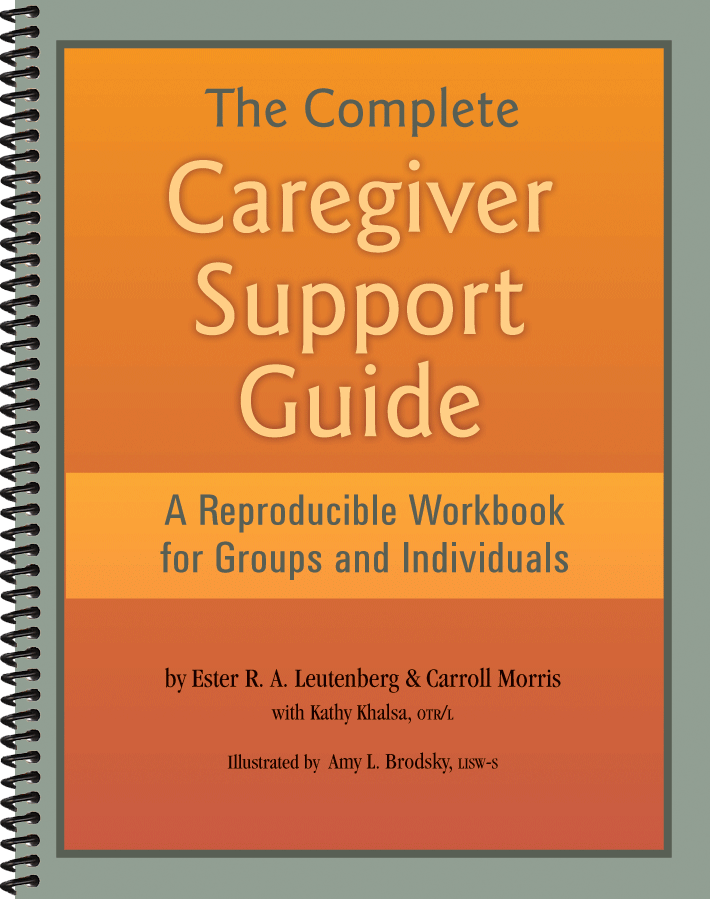
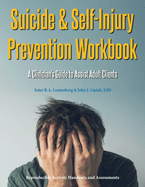
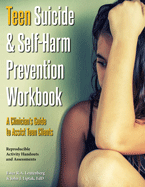

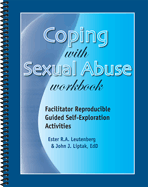
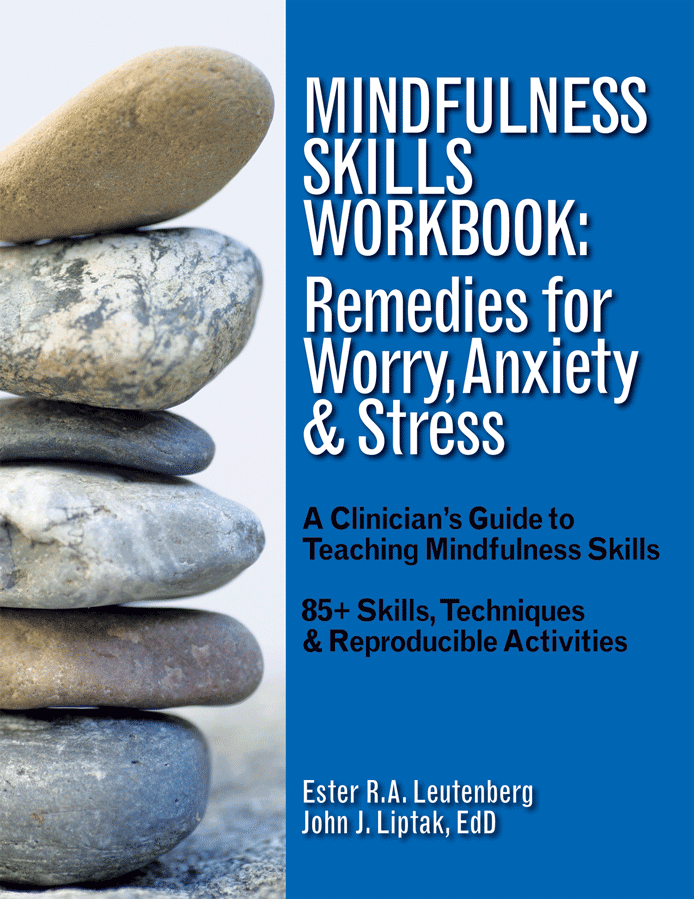
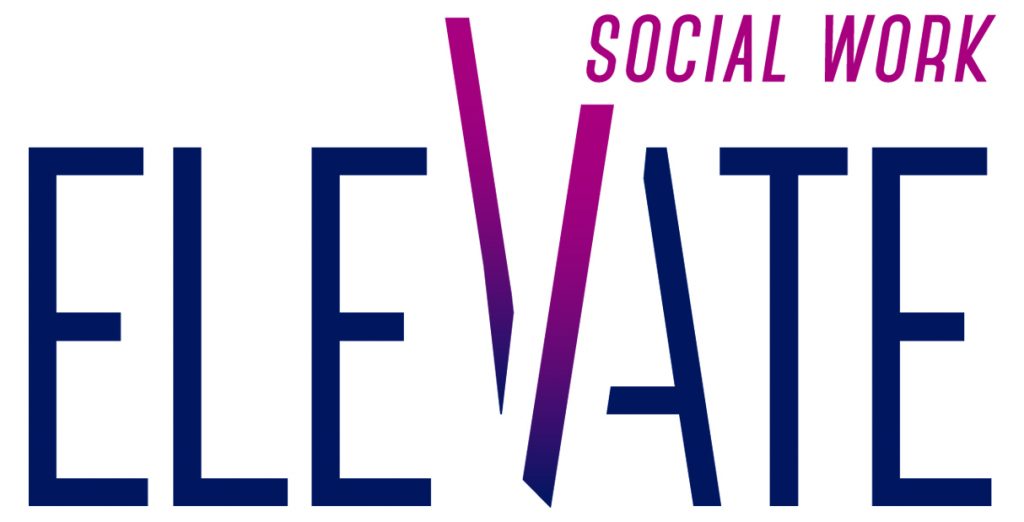




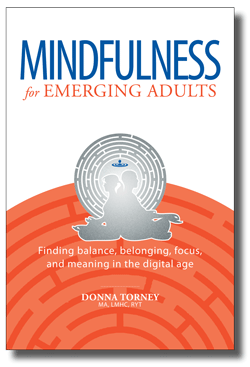



 An important part of finding balance in our lives is discovering a way to get the sleep we need. Many college students, new mothers and fathers, the elderly, and almost everyone in between seem to be overtired all the time. A few folks will sit in the coffee shop, drink their third double espresso, and brag about how little sleep they need. Surviving on a caffeine buzz and adrenaline from deadlines, they think they are still performing at their optimum level. They are ignoring the fact that all things in the natural world have rhythms and routines. Consider the phases of the moon, the waves of the ocean, the seasons of the year. Humans, too, have rhythms. Unlike the rest of the natural world, we often work against the natural cycle of work and rest by denying our bodies and brains enough sleep every night.
An important part of finding balance in our lives is discovering a way to get the sleep we need. Many college students, new mothers and fathers, the elderly, and almost everyone in between seem to be overtired all the time. A few folks will sit in the coffee shop, drink their third double espresso, and brag about how little sleep they need. Surviving on a caffeine buzz and adrenaline from deadlines, they think they are still performing at their optimum level. They are ignoring the fact that all things in the natural world have rhythms and routines. Consider the phases of the moon, the waves of the ocean, the seasons of the year. Humans, too, have rhythms. Unlike the rest of the natural world, we often work against the natural cycle of work and rest by denying our bodies and brains enough sleep every night.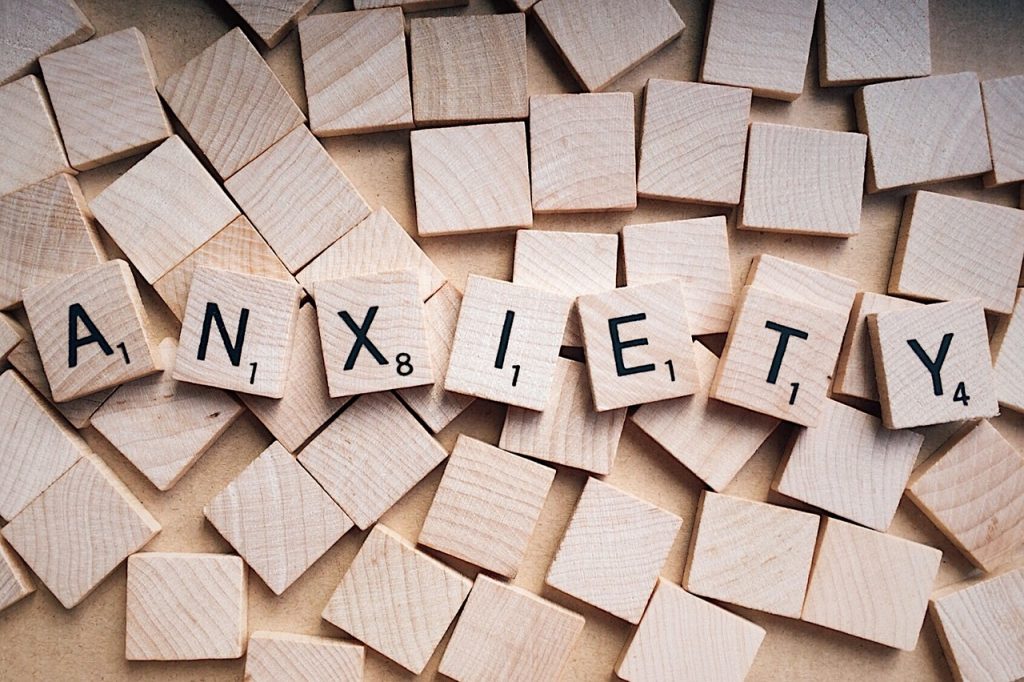 Anxiety is anticipation of a future threat. Anxiety is normal in the everyday life of everyone and can actually be a good thing. Anxiety motivates one to accomplish goals and warns a person of a dangerous situation. However, intense anxiety can involve debilitating symptoms and affect performance in school, athletics, and interpersonal interactions. Some teens persistently experience excessive amounts of worry and fear about everyday situations and this may lead to depression. Persistent anxiety and fear can interfere with daily activities. Often, these symptoms are difficult to control.
Anxiety is anticipation of a future threat. Anxiety is normal in the everyday life of everyone and can actually be a good thing. Anxiety motivates one to accomplish goals and warns a person of a dangerous situation. However, intense anxiety can involve debilitating symptoms and affect performance in school, athletics, and interpersonal interactions. Some teens persistently experience excessive amounts of worry and fear about everyday situations and this may lead to depression. Persistent anxiety and fear can interfere with daily activities. Often, these symptoms are difficult to control.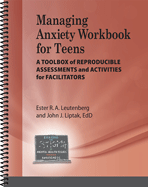
 Couples become separate entities when they break up and must chart their individual ways. Loss of a relationship can mean the end of dreams, routines, stability, emotional and financial security, companionship, and family as it existed before the breakup. The resulting trauma is one that impacts on the partners, of course. To varying degrees, children, extended family, friends and colleagues suffer from and grieve the loss as well.
Couples become separate entities when they break up and must chart their individual ways. Loss of a relationship can mean the end of dreams, routines, stability, emotional and financial security, companionship, and family as it existed before the breakup. The resulting trauma is one that impacts on the partners, of course. To varying degrees, children, extended family, friends and colleagues suffer from and grieve the loss as well.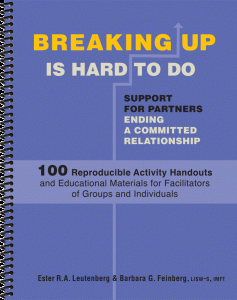
 Exploring the Forms and Effects of Loneliness
Exploring the Forms and Effects of Loneliness